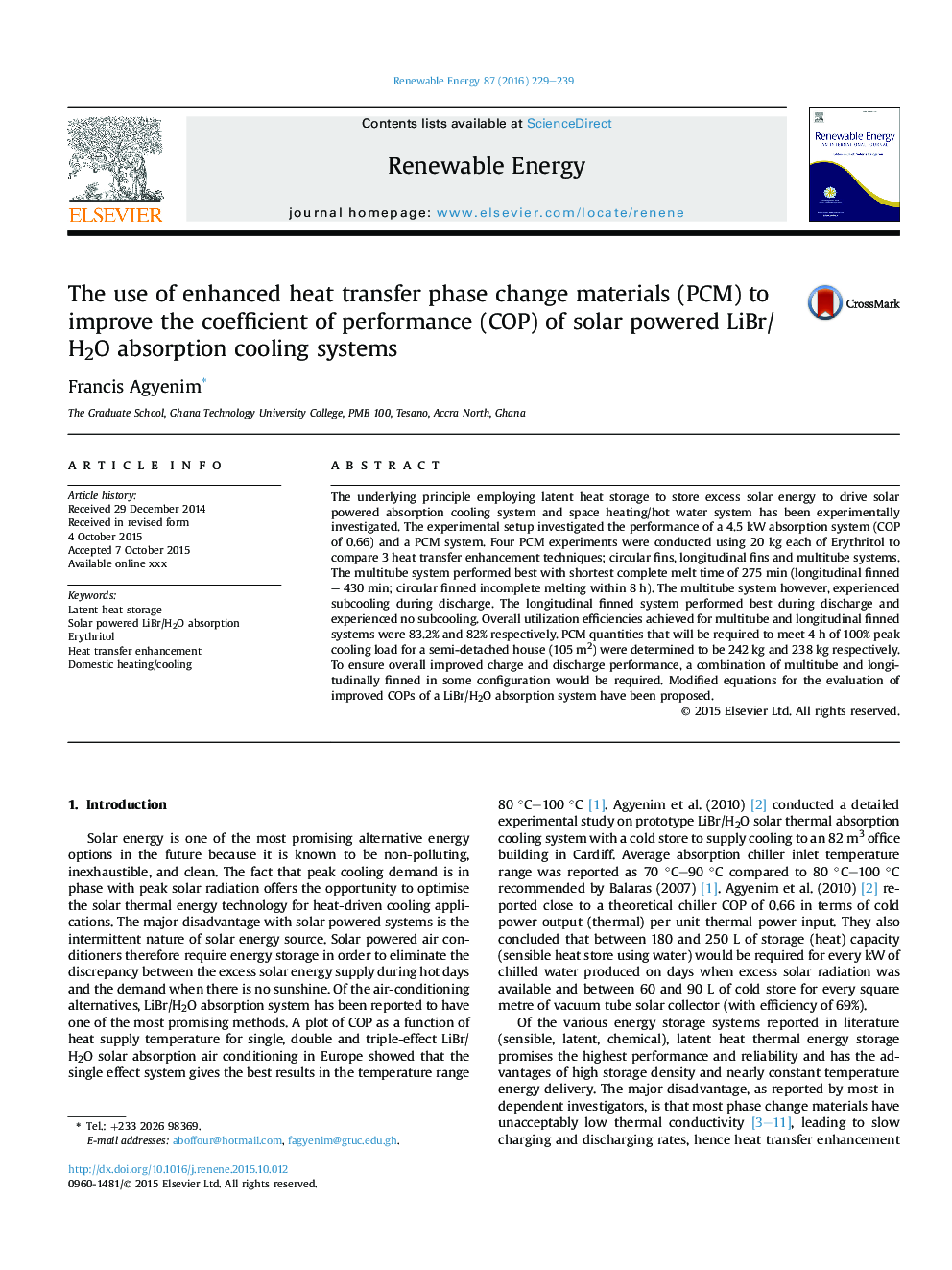| Article ID | Journal | Published Year | Pages | File Type |
|---|---|---|---|---|
| 10293963 | Renewable Energy | 2016 | 11 Pages |
Abstract
The underlying principle employing latent heat storage to store excess solar energy to drive solar powered absorption cooling system and space heating/hot water system has been experimentally investigated. The experimental setup investigated the performance of a 4.5Â kW absorption system (COP of 0.66) and a PCM system. Four PCM experiments were conducted using 20Â kg each of Erythritol to compare 3 heat transfer enhancement techniques; circular fins, longitudinal fins and multitube systems. The multitube system performed best with shortest complete melt time of 275Â min (longitudinal finned - 430Â min; circular finned incomplete melting within 8Â h). The multitube system however, experienced subcooling during discharge. The longitudinal finned system performed best during discharge and experienced no subcooling. Overall utilization efficiencies achieved for multitube and longitudinal finned systems were 83.2% and 82% respectively. PCM quantities that will be required to meet 4Â h of 100% peak cooling load for a semi-detached house (105Â m2) were determined to be 242Â kg and 238Â kg respectively. To ensure overall improved charge and discharge performance, a combination of multitube and longitudinally finned in some configuration would be required. Modified equations for the evaluation of improved COPs of a LiBr/H2O absorption system have been proposed.
Related Topics
Physical Sciences and Engineering
Energy
Renewable Energy, Sustainability and the Environment
Authors
Francis Agyenim,
